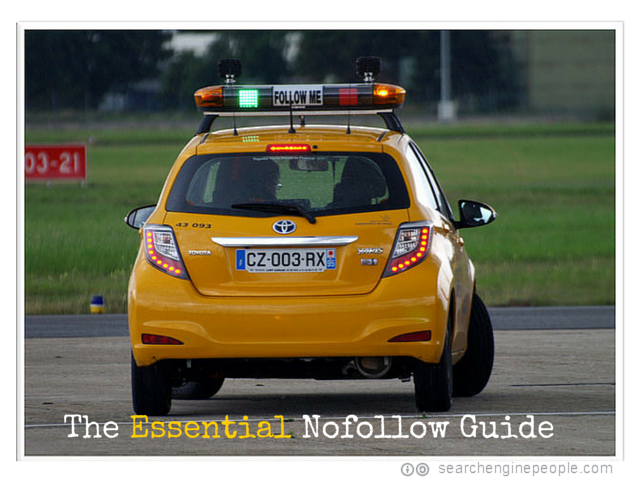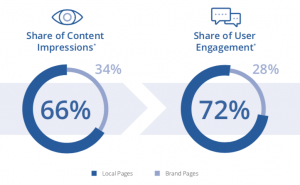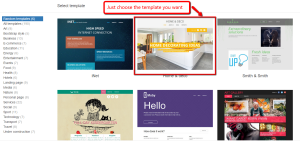Shannon Hutcheson is a day dreamer, sarcastic cheekster, cat herder, gamer, and bookaholic. She’s an experienced copy editor and a moderator at MyBlogGuest.
What Is (A) Nofollow?
Nofollow is an indication that can be added to a link to tell search engines you recommend they not follow that link. Basically to tell them not to pay attention to that link at all.
In practice search engines do follow the link but in most cases remove that mention of the link from their ranking calculations.
It is used to identify:
- unimportant or useless links on your site. A good example is a register link: Google can’t register so why have them follow the link?
- links for which you are paid links, such as ads or sponsored links.
- content you can’t trust. Usually links people can add to a comment form or their user profile on your site.
History Of Nofollow
Originally, the nofollow attribute was used on the page-level with a meta tag. It instructed search engines not to follow (crawl) any of the outgoing links on a page. Example:
<meta name=”robots” content=”nofollow” />
Another way to tell search engines not to follow (crawl) pages was to include them in a robots.txt file.
But it was more difficult to prevent robots from following individual links on a link by link basis. The rel=nofollow attribute allows webmasters to easily instruct the search engine robot to not crawl a link.
Nofollow as a value for a links “rel(ation)=” attribute was introduced in 2005 by Google. Originally, the rel=”nofollow” attribute was added to discourage comment spam in blogs.
From the Google Blog:
From now on, when Google sees the attribute (rel=”nofollow”) on hyperlinks, those links won’t get any credit when we rank websites in our search results. This isn’t a negative vote for the site where the comment was posted; it’s just a way to make sure that spammers get no benefit from abusing public areas like blog comments, trackbacks, and referrer lists.
From Google Content Guidelines:
“Nofollow” provides a way for webmasters to tell search engines “Don’t follow links on this page” or “Don’t follow this specific link.”
Nofollow FAQ’s
- What’s the value or use of using nofollow?
In on-site SEO nofollowing links in your own site can be extremely useful in guiding a search engine crawler.
Proper use on links pointing to other websites can help you keep being perceived as a trusted player.
- Why would I want to use nofollow on a link?
You might want to use nofollow on a link you don’t endorse, but has information you want to point to.
On blogs, you may want to give a nofollow link to spam comments and give credit to comments that are well thought out or contribute to your post.
To help not waste the time a search engine crawler spends on your time, nofollow may also be used to block links a search engine has no use following.
- Does a link with nofollow count as a backlink?
In the vast majority of cases it does not count or function as a backlink.
There are some indications that massive use of nofollow, such as on Wikipedia, leaves the consideration up to the discretion of the search engine.
Depending on the source a nofollowed link can still act as a citation. While a nofollowed link from an article on the New York Times has no link ranking value it does carry citation value.
- Does nofollowing a link on a page increase or pagerank?
Nofollowing a link on a page does not increase or decrease the amount of “ranking power” that flows through the other links [1].
- How do I add nofollow?
For more control of your inbound and outbound links, you can add tag rel=nofollow. Example:
<a href=”your-url.com ” rel=”nofollow”>Url Name</a>
Many popular blogging and CMS systems, such as Joomla or WordPress, already automatically add nofollow to links in user submitted comments.
- How do I remove nofollow?
In general you don’t want to do so.
Plugins and extensions exists for many popular blogging and CMS systems, such as Joomla or WordPress, to either mass remove the nofollow value or to add/remove it on a case by case basis.
- How can I see if a link is nofollow?
For most non-developers the easiest way is to add an extension or plugin to their web browser. The extension will highlight or outline links that are nofollowed.
- Chrome:
- Firefox:
- Opera (* most Chrome extensions work in Opera as well):
* Leader image with photo by Aerofossile2012
Nofollow Link Attribute: Essential Information For Marketers & Managers
Nofollow Link Attribute: Essential Information For Marketers & Managers appeared first on Search Engine People Blog.
(295)








